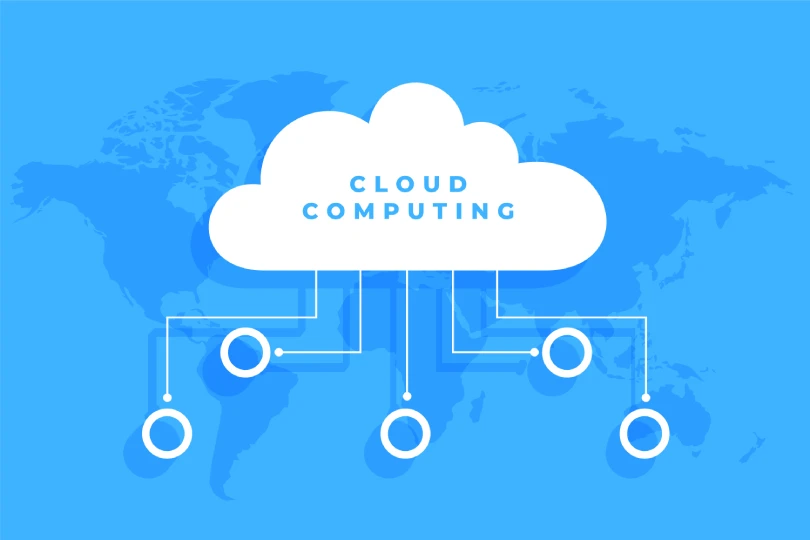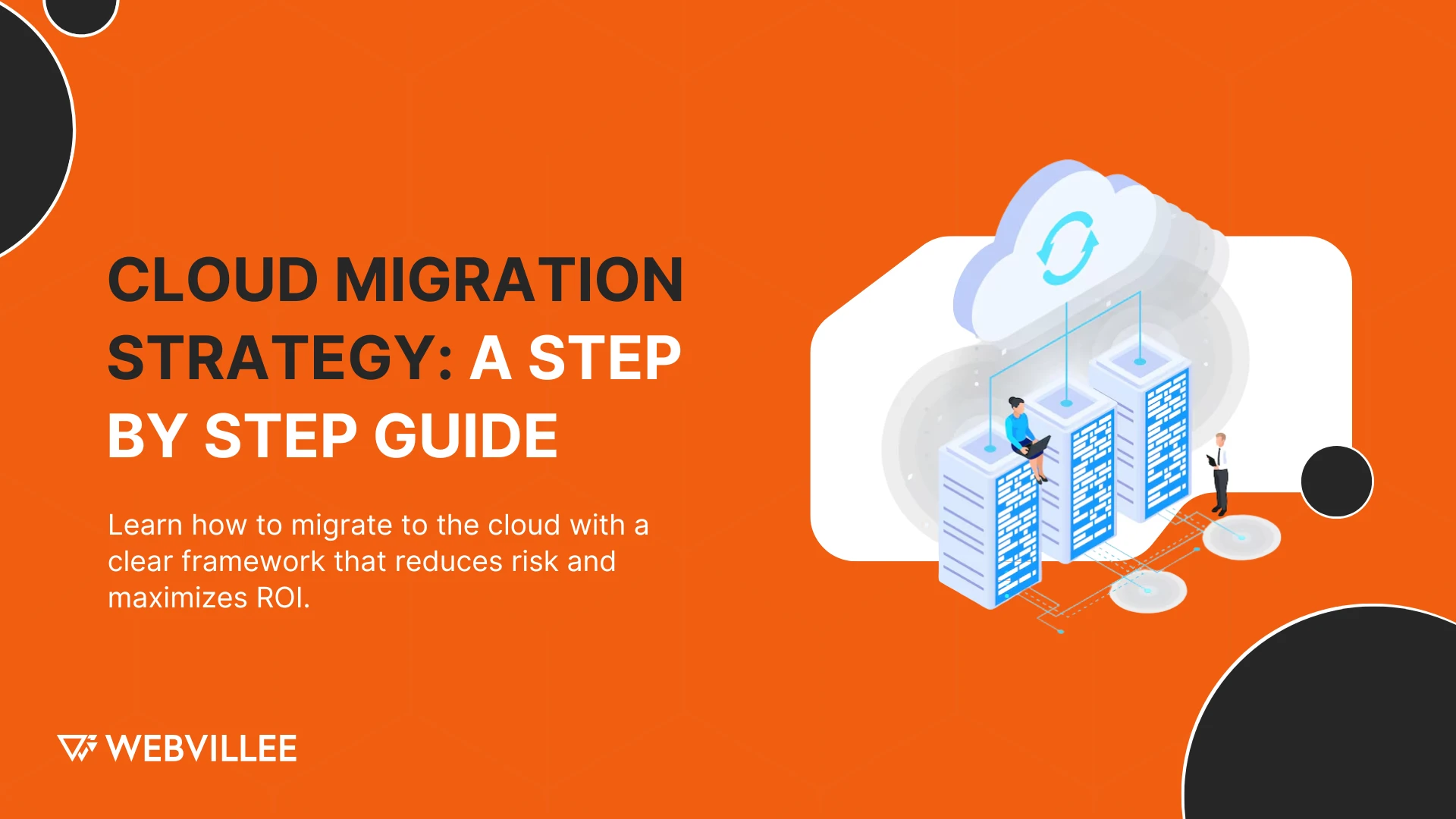Cloud migration isn’t just a technical shift. It’s a strategic move that impacts how your business performs, scales, and competes. Whether you’re running a SaaS platform, managing enterprise workloads, or rethinking your digital architecture, a clear cloud migration strategy gives you control and confidence.
This guide walks you through a proven step-by-step strategy and the real-world benefits that come with it. No fluff, just a clear path to modernize and optimize with the right Cloud Solutions supporting your goals.
Why Cloud Migration Needs a Thoughtful Strategy
Migrating to the cloud isn’t about “lifting and shifting” infrastructure. It’s about aligning technology with business goals, optimizing performance, and preparing for long-term growth.
Here’s what a thoughtful migration strategy helps you achieve:
- Reduce operational complexity with centralized cloud management
- Scale resources efficiently to meet changing demands
- Improve reliability, uptime, and security posture
- Streamline costs through optimized usage and billing
- Future-proof your tech stack for evolving business needs

Step 1: Audit Your Current Infrastructure
Before you move anything, map out where you are. You can’t build a modern cloud strategy without knowing what’s already in place. This foundational audit is about clarity. It helps you avoid surprises later and builds a migration plan that’s based on facts, not assumptions.
- Catalog your digital environment
List every application, service, workload, and database in your current infrastructure. Note their dependencies, configurations, and how they interact with each other. This inventory prevents you from missing critical connections during migration.
- Understand performance and usage patterns
Analyze CPU usage, memory utilization, network traffic, and storage activity. Determine peak loads and idle times. This helps define the right cloud resources for each workload, so you’re not overpaying or under-provisioning.
- Calculate current operational costs
Break down how much you spend on hardware, software licenses, maintenance, and energy. Compare these to projected cloud costs using pricing calculators from cloud providers. This creates a clear business case and shows where savings are possible.
- Evaluate compliance and security status
Review how data is stored, who can access it, and how it’s protected. Identify any compliance mandates like GDPR, HIPAA, or SOC 2. If any security gaps exist today, address them before migration so they don’t carry over.
- Check technical debt and legacy systems
Some legacy apps might not be cloud-friendly. Others might be redundant or too costly to reconfigure. Flag these early. This audit gives you a chance to retire what’s no longer serving your strategy or refactor tools that can be modernized.
This step sets the baseline for everything that follows. It gives you the clarity to prioritize what should move first, what needs rework, and what should be left behind. Without it, cloud migration becomes guesswork. With it, you’re operating from a position of control and strategy.
Step 2: Define Your Business Objectives
Cloud migration is more effective when it’s led by purpose, not just pressure. This step is where technology meets strategy. It’s not about moving systems for the sake of it. It’s about defining what the move needs to accomplish for your organization.
- Reduce total cost of ownership (TCO)
Migrating to the cloud can cut capital expenditure by shifting to a pay-as-you-go model. But it’s not automatic. Define what TCO reduction looks like for you, whether that’s eliminating physical infrastructure, reducing licensing complexity, or lowering maintenance costs.
- Improve product delivery speed or uptime
If faster release cycles or fewer outages are core goals, your migration must prioritize automation, DevOps readiness, and resilient architecture. This could influence your choice of cloud-native tools or platform-as-a-service components.
- Enhance global scalability
If you’re planning global expansion or experiencing fluctuating demand, cloud scalability can help. But you’ll need a strategy that considers latency, regional deployments, and load balancing from day one.
- Enable more secure remote work
As distributed teams become the norm, your cloud setup should support secure access, zero-trust architecture, and role-based controls. Objectives around workforce agility should directly shape how you design identity and access management in the cloud.
- Other relevant outcomes
You might also aim to improve data analytics, modernize legacy systems, or support AI and automation. These, too, need to be scoped and tied to specific business metrics.
These objectives aren’t just theoretical. They guide architecture decisions, vendor selection, migration order, and even the KPIs you’ll use to measure success. When everyone’s aligned on the “why,” the “how” becomes a lot easier to execute and a lot more valuable in the long run.
Step 3: Choose the Right Cloud Model
Choosing the right deployment model is critical because it directly impacts security, performance, cost, and flexibility. Your decision here should be driven by how your business operates today and how you plan to grow in the future.
- Public Cloud
This model is ideal if you need rapid scalability and want to reduce infrastructure management. Public cloud providers like AWS, Azure, and Google Cloud offer a wide range of services with predictable pricing. It’s well-suited for modern SaaS products, global apps, and organizations that prioritize speed over control.
- Private Cloud
If your workloads demand higher control, custom infrastructure, or strict regulatory compliance, the private cloud gives you dedicated resources. It’s often used in industries like finance or healthcare, where isolation and performance are non-negotiable. This model offers more predictability and control but requires more in-house expertise or managed services.
- Hybrid Cloud
Many enterprises choose hybrid models to maintain some services on-premises while gradually moving others to the cloud. This approach allows for flexibility and smoother transitions, especially when dealing with legacy systems or sensitive data. It’s a solid choice if you’re not ready for a full migration but want cloud benefits.
- Multi-cloud
A multi-cloud strategy involves using services from more than one cloud provider. It reduces dependency on a single vendor and gives you the freedom to choose best-in-class services for different workloads. It also enhances resilience and supports geographic distribution. However, it comes with added complexity in management and integration.
The right model isn’t about what’s trending. It’s about what aligns with your operational goals, regulatory requirements, and future innovation plans. Make this decision early it becomes the foundation for how you build, secure, and scale your systems moving forward.

Step 4: Prioritize Workloads for Migration
Cloud migration isn’t a sprint, it’s a phased transition. Trying to move everything at once increases the risk of downtime, budget overruns, and operational friction. The smarter path is to prioritize your workloads based on risk, value, and complexity.
- Start with low-risk, high-impact workloads
These are typically systems that aren’t mission-critical but still offer measurable gains when migrated. Think internal tools, dev/test environments, or lightly integrated applications. They allow your team to get comfortable with the process and see early wins.
- Use pilot migrations to test performance and cost-efficiency
Select a few non-critical workloads and move them as a test case. Evaluate how they perform in the cloud, what optimizations are needed, and how cost projections align with actual spend. Use these insights to fine-tune your broader migration plan.
- Move complex or legacy systems last, only after validation
Applications with heavy customizations, interdependencies, or outdated code often require re-architecture. These should be tackled after your team has gained hands-on migration experience and a more refined strategy. - Leverage migration tools and frameworks for smoother execution
Cloud providers and third-party platforms offer automated tools for discovery, planning, and execution. Using these tools reduces manual errors, speeds up the process, and improves accuracy. They also help maintain documentation and visibility throughout the migration.
This phased approach reduces pressure on your IT team, avoids business disruption, and gives everyone time to adapt. Most importantly, it builds internal trust, one successful migration at a time.
Step 5: Create a Migration Plan
A successful migration doesn’t happen by improvisation. You need a structured plan that translates strategy into execution step by step, team by team. This plan becomes your operating manual for the entire transition.
- Assign a dedicated, cross-functional team
Your migration team should include IT leaders, developers, security professionals, and business stakeholders. This ensures alignment across departments and prevents critical gaps in communication or planning.
- Break down the migration into manageable phases
Each phase should include specific workloads, timelines, and resource allocations. Avoid overloading your team by migrating too much too quickly. Smaller, focused phases deliver better control and more predictable outcomes.
- Create backups and rollback protocols
Always prepare for edge cases. Have complete backups for every system before it moves. Design rollback procedures that can be executed quickly if anything fails in production. This isn’t paranoia it’s smart risk management.
- Set clear go-live and validation steps
Every phase should end with a structured cutover process. Define what “done” means, how you’ll validate success, and who signs off. Include performance testing, data integrity checks, and user acceptance criteria before flipping the switch.
- Document everything
Maintain a detailed log of decisions, changes, issues, and learnings. This record becomes a playbook for future migrations, audits, and troubleshooting.
When you plan it right, migration becomes less of a disruption and more of a controlled transformation. It keeps your team focused, reduces downtime, and ensures that every step serves a purpose.
Step 6: Secure and Optimize During Migration
Security and performance are not afterthoughts; they should be embedded into every stage of your migration. As you transition to the cloud, this is your chance to strengthen your foundation and ensure your workloads are not just running, but running well and safely.
- Implement identity and access management (IAM)
Set strict rules around who can access what. Use role-based permissions and enforce multi-factor authentication (MFA). Avoid shared credentials and legacy access privileges that often go unnoticed during migration.
- Encrypt data in transit and at rest
Every file, every packet protects it all. Use encryption standards recommended by your cloud provider. This is especially important for regulated industries where data privacy is non-negotiable.
- Establish real-time monitoring and alerting
Cloud platforms offer powerful tools for observing your infrastructure. Set up alerts for unusual activity, cost spikes, or system slowdowns. Monitoring helps you stay proactive instead of reacting to issues after they escalate.
- Automate security updates and patch management
One of the best parts of cloud infrastructure is the ability to automate. Take advantage of tools that ensure your workloads are always up to date with the latest patches, without manual intervention.
- Right-size your resources from the beginning
Over-provisioning leads to wasted spend. Under-provisioning affects performance. Use performance data from your pre-migration audit to allocate the right amount of compute, storage, and network capacity for each workload.
Security and optimization during migration don’t slow things down; they make the transition smoother, more predictable, and future-ready. Done right, this step sets the tone for your ongoing cloud operations.

Step 7: Post-Migration Review and Optimization
Migrating to the cloud isn’t the end. It’s the start of a more flexible and efficient way of working. After the move, your focus should shift to checking performance, refining your setup, and making sure everything runs smoothly.
- Check performance against earlier benchmarks
Compare how your applications are running now with how they performed before the migration. Look at speed, uptime, and usage. This helps you see what’s working and what might still need adjustment.
- Review cloud costs and adjust where needed
Actual usage often differs from initial estimates. Study your cloud bills to identify services you don’t need or resources that are oversized. Use options like auto-scaling and long-term pricing plans to reduce waste.
- Ask for feedback from your teams
Talk to those who use the system daily. Is it faster? Are they running into issues? Their insights are useful for refining the setup and improving the day-to-day experience.
- Shut down old systems and update documentation
Turn off any on-premise tools or hardware you no longer need. Make sure all changes are recorded clearly. Good documentation helps with audits, training, and future upgrades.
- Keep improving, even after the migration
Cloud platforms give you room to grow. Review your setup regularly to make sure it still supports your business goals. As your needs change, your infrastructure should change with it.
This step helps you get the full value out of your cloud investment. It ensures you’re not just running in the cloud, but doing it in a way that supports your growth and avoids waste.
Benefits That Matter
When done right, cloud migration delivers real, measurable advantages:
- Cost Efficiency: Pay for what you use and reduce CapEx
- Speed to Market: Launch updates and products faster
- Scalability: Match infrastructure to your exact demand
- Resilience: Minimize downtime and business disruptions
- Security: Access advanced cloud-native security tools
- Innovation: Free up IT teams to focus on strategic projects
These benefits compound over time and drive long-term advantage.
How Webvillee Helps You Migrate with Confidence
At Webvillee, cloud migration is never treated like a side project. It’s a structured transformation aligned with your business priorities.
Here’s how Webvillee supports you from start to scale:
-
Tailored strategies built around your goals and systems
-
Hands-on audit, planning, and implementation services
-
Security-first architecture and cloud governance frameworks
-
Performance monitoring, cost optimization, and ongoing support
-
Experience with AWS, Azure, GCP, and hybrid or multi-cloud environments
You get a team that speaks both tech and business, helping you reduce risk, avoid downtime, and accelerate ROI.
Get in touch with Webvillee to start building a cloud migration plan that’s built for long-term success.

